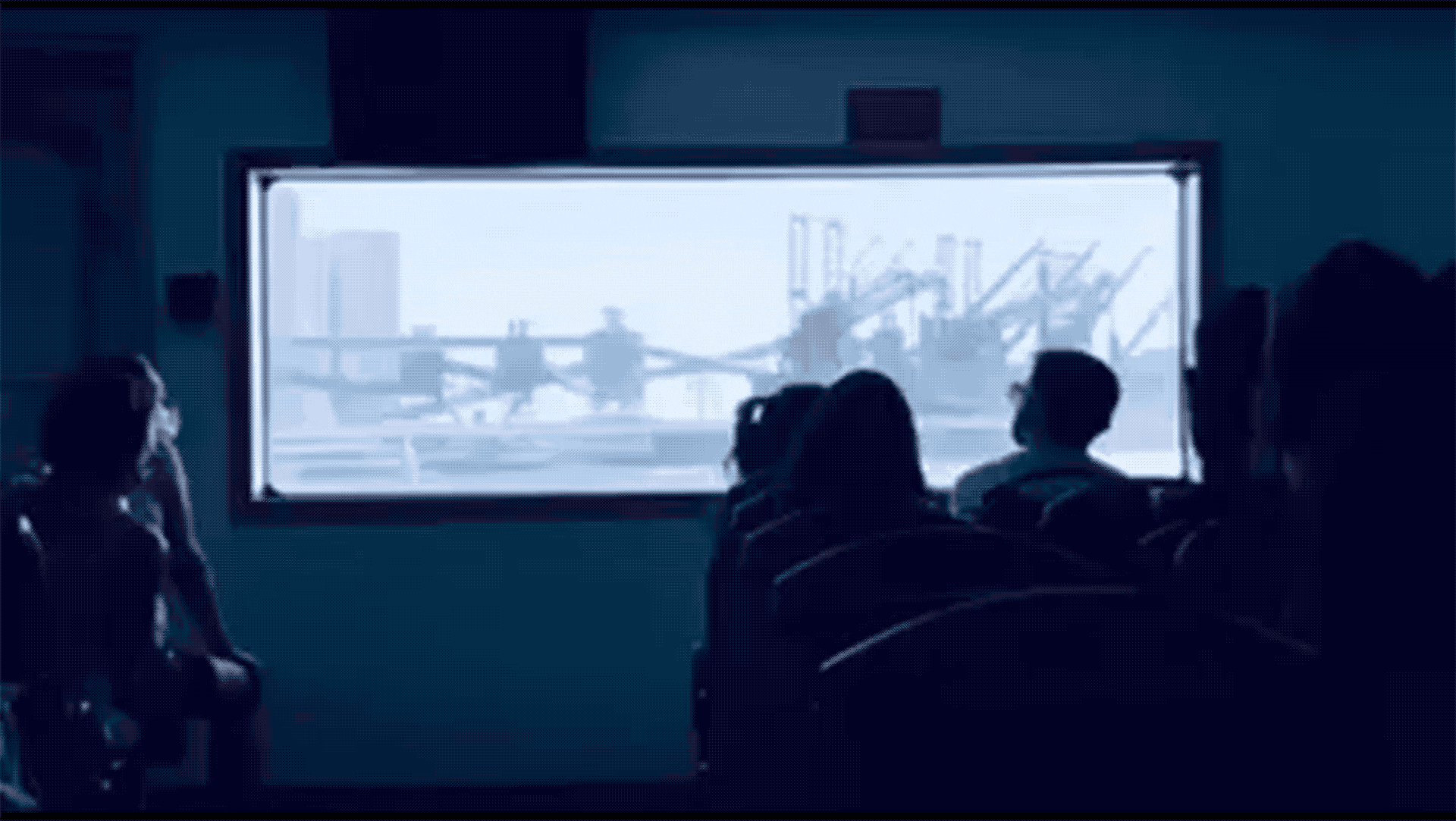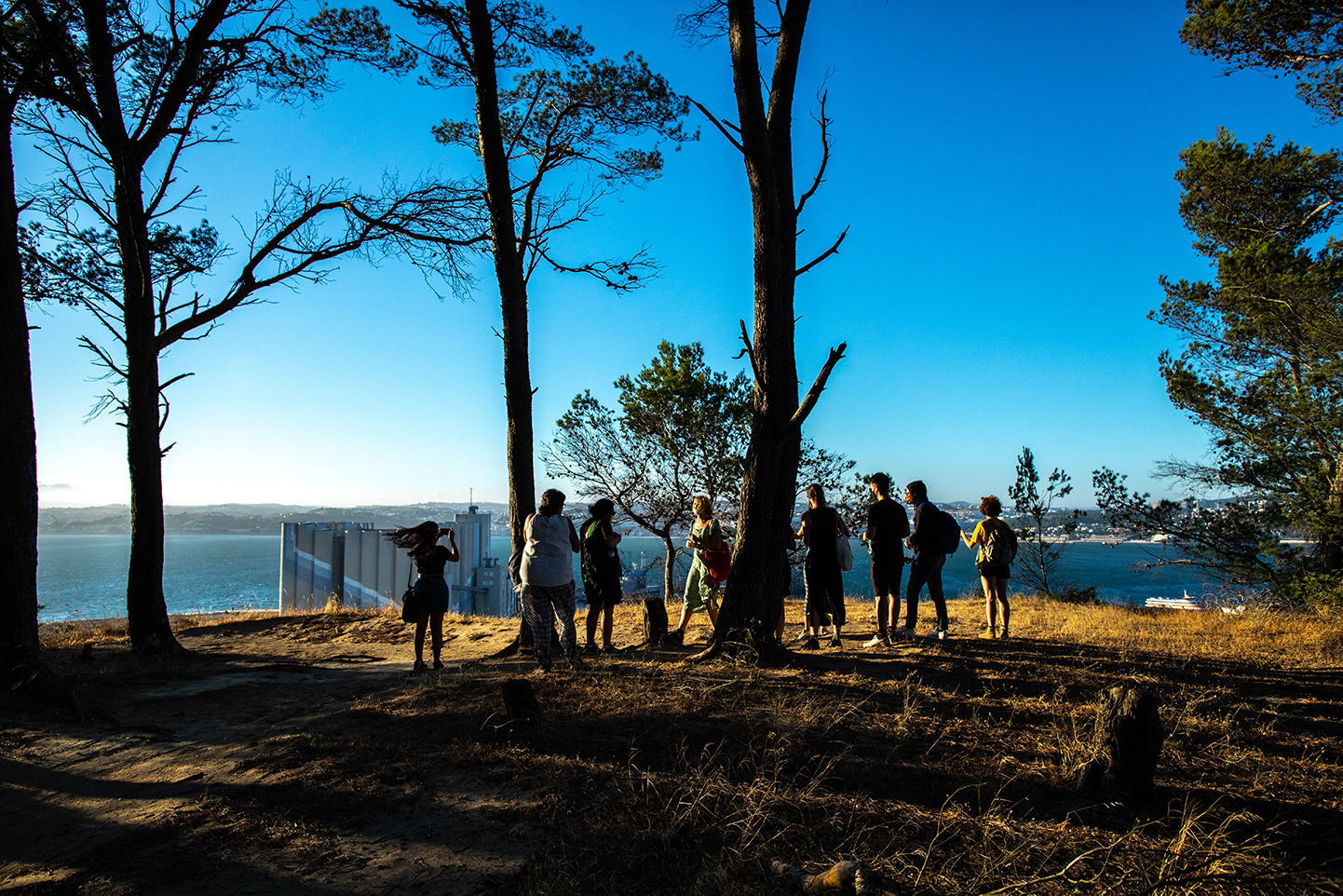
MAAT MODE – THE PEOPLE INTERVIEWS
This series of informal conversations aims to disclose the ideas and research behind a selected number of projects commissioned for maat Mode 2020. Some of these dialogues were recorded during the lockdown in April and May 2020, while others were held live in maat’s Media Room, a space designed as part of Beeline, SO – IL’s museum-wide architectural intervention.
maat / Beatrice Leanza
Today our guest is Ana Jara, an architect, production designer and researcher in urban studies and co-founder of and manager at Artéria. Artéria is an independent architectural studio founded in 2011 which aims to conceive, develop and promote urban regeneration projects through interdisciplinary methodologies that engage communities, in collaboration with public and private organizations, artists and other professionals.
Ana, your project that is part of maat Mode is titled Journeys to the In-between, tell us more about it and how it connects to your practice at Artéria.
Ana Jara
Journeys… is a site-specific proposal for maat; its aim is to better understand its specific context and location, a form of investigation that Artéria has been developing – a sort of archaeology of the city exploring its layers and the complexity of its different parts, and endeavouring to read them through the haptic experience of walking. Our contribution is also an attempt at understanding the specific place where maat sits and its components – architecturally speaking, two buildings that make up a bicephalous identity – but also in relation to its spatiality within the complex waterfront area, and thus its relationship with the other side of the river. We designed three speculative walks, which are meant to connect maat with the reality of the city. All three walks start out from the museum, heading toward different parts of Lisbon, thus evidencing the geographical, political, economical, social, cultural, spatial, temporal, physical and fictional connections between them and maat.
maat
You’ve mentioned before that this form of performative research tackling the territory of the city of Lisbon is founded on recognising its inherent heterogeneity and, as written in your project statement, “its perpetual unfinished state, shaped by constant negotiations and inter-relations between different, and often contradictory, agents and interests.” Can you give us examples of these agents and interests, and how are they included in this project?
Ana Jara
The agents are the forces that make the city; they differ greatly and are often contradictory, and in a sense, Lisbon has been developed in recent years on the back of a lot of investment in the real estate sector. These investments also created a “city” in itself – take, for instance, the historic centre with the various renovation processes and all the hotels that were built, generating problems and conflicts within the body of the city, the body of its inhabitants, so what one has here is a narrative of tensions.
We have taken an interest in this in many ways at Artéria, and in recent years we’ve tried to understand the processes from within.
This way of developing the city is based on the exploration of its space, the forces from outside. On the other hand, there is the development that comes out of its social tissue and the forces that are neighbourhoods, networks, local businesses – these produce the tensions that are part of a city that is alive, versus a terrain for speculation.
maat
You have spoken not just of mere mapping, but of cartographic practice. For your project with maat you are taking binary categories as a system of reference to articulate three journeys. These dichotomies, which could very much be taken as universal categories, are: centre versus periphery, public and private, chaos and order. Can you give us an example of what people can expect to experience?
Ana Jara
I will start with the first one that takes us to the opposite bank of the river. We start with centre/periphery for a reason and I think this moment in time (editor’s note: this interview was held during the lockdown) is a very interesting one if we are to understand and re-do this relationship which is often evoked when thinking about and making decisions on space. Centre/periphery can be north and south, it can be many things that define geographies of development and underdevelopment and when we talk about Greater Lisbon, and when we go to the “other side” of the city, i.e. the other side of the river, it’s a way of turning the map upside-down. So, what if the centre of the city was in a different place (and it is!)? Now we are all telecommuting, working on our projects and talking to each other from our homes, and thus we have a different sense of centre. It is kind of imposed upon us, but we are able to re-think this sense of centrality and periphery based on a common ground. We could picture a more unified reality, not that of a city centre, or if you want, a polycentred reality.
Video journey #01 by robotbambino.


"Journeys to the In-Between #1" (26/07/2020). Photos: Alexandre Cortez.
maat
There is another key aspect to your project, which is the conversation that accompanies each journey. Could you also tell us a bit more also about the multidisciplinary character of the teams you work with in your projects? How does this play out in Journeys…?
Publicness is a project, not an accomplished state.
Beatrice Leanza, paraphrasing Stavros Stavrides.
Ana Jara
We have been working with the performative and visual arts in connection with urban studies and architecture to analyse certain conditions in a multi-layered fashion. We work with urban matter, with urbanity as “matéria” of possibilities that calls for new lenses both political and artistical positions of looking at it. As I said, an archaeology of what is happening on site, focused on finding evidences that can question black and white visions. So, in these conversations invite people to sit with us after walking; we finish these performative experiences with a talk. We create open groups that call on performative artists and urban studies practitioners to discuss the binaries that define each walk. One is, for example, Stavros Stavrides (1), the author of Towards the City of Thresholds, a Greek architect who has been exploring this in-between space for a long time and investigating its potential. This is a particularly pertinent aspect now because we feel that this articulation is missing in the discourse – e.g. public space. He talks of thresholds, doors, places for the informal, temporary, and more important that are capable of generating social space. Under lockdown, as we are taking our bodies out of the city, discussing this topic is ever more relevant. Herein may lay seeds for future research for the practices that deal with the common.
maat
He’s one of my favourite authors and there is one quote from another book of his Common Space: The City as Commons that I’ve never forgotten, which is quite simple and so straightforward: “publicness is a project, not an accomplished state”, meaning it is something that we constantly negotiate, rethink, reconstruct and modify as we go along. I think it is of great significance to reminding us who we are.
-
(1) Stavros Stavrides was one of the initial guests for the last open talk, under the theme Chaos and Order.
Artéria is an independent architecture studio, founded in 2011, which conceives, develops and disseminates urban rehabilitation projects to implement singular urban interventions. Through the direct involvement of communities in the production of their own intervention programmes, establishing partnerships with local associations and public entities, Artéria works the environmental, social and artistic dimensions of architecture. It develops research and curatorial proposals in the intersection between architecture and other disciplines, in collaboration with artists and scientists.
Journeys to the In-Between takes Lisbon as a territory of research, to reconfigure the perception of the city and to question urban practices and policies. Situating its action in the threshold between two poles, it aims to overcome categories that persist in discourses and practices related to urban space — centre vs. periphery, public vs. private, chaos vs. order — to destabilize the binary, and search for non-normative spatial entities. It consists of three sets of "speculative walks" and "open talks", gathering guests from the field of urban studies with artists whose work deals with spatial and territorial transformations.




